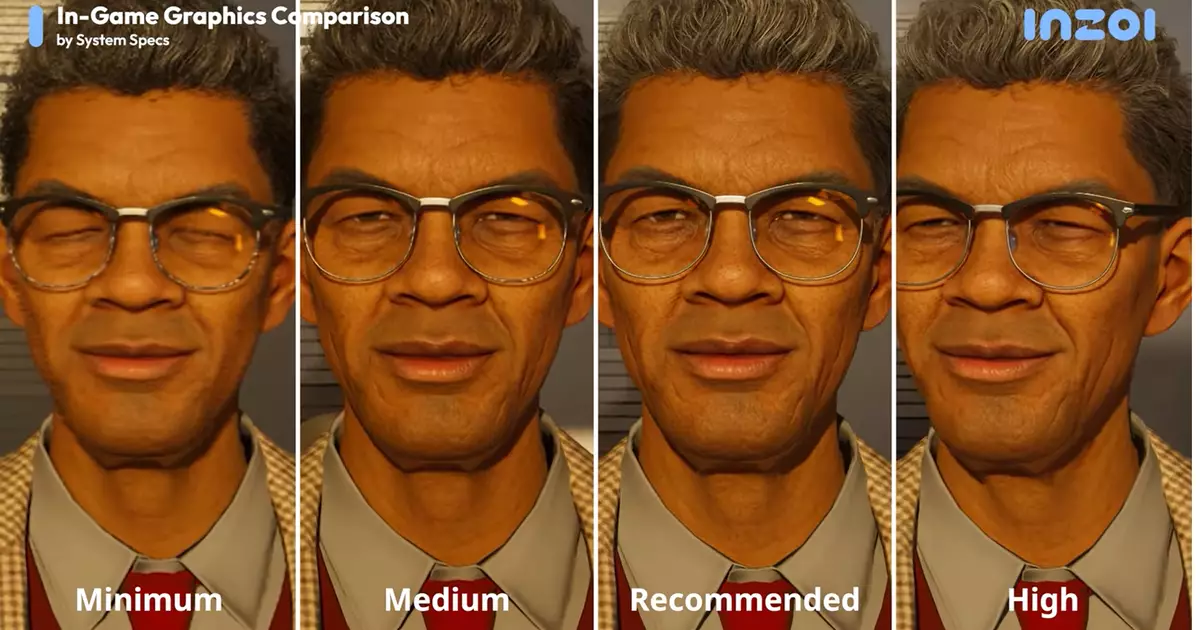Gamers often tread a fine line of excitement and skepticism when it comes to new releases, particularly those that promise revolutionary changes in gameplay and aesthetics. The impending arrival of inZOI, a novel neighborhood simulator by Krafton, is no exception. Marketed as a game that integrates live generative AI capabilities, inZOI dares to shift the boundaries of how we understand life simulation. Its promise to create outfits, animate characters, and synthesize interactions through advanced AI offers both potential excitement and a landscape fraught with ethical misgivings. As the developers plan for early access on March 28, the gaming community waits with bated breath, peering into the depths of this new venture.
Generative AI: A Double-Edged Sword
The draw of inZOI lies in its use of generative AI, a feature that pushes the envelope of traditional game design. Players can feed the system various forms of media to create unique items and experiences within the game. However, this reliance on generative AI invokes a critical response; as history has shown, the capabilities of these tools can lead to a plethora of unintended consequences. While the game assets themselves may not be AI-generated, the implications of generative AI in gaming remain controversial. The risk of misuse or create a derivative art style that lacks genuine creativity persists. Developers’ responsibility to navigate these waters become even more pronounced within this context.
As generative AI continues to evolve, the line between human creativity and machine-generated outputs blurs. In a quest to create photorealistic visuals, Krafton must balance innovation with caution, lest they let the machine overshadow the artist’s touch. This becomes especially pertinent when considering the visual style of the game—while undeniably striking, the almost soulless quality of photorealism can lead to disconnection. Therein lies the danger: players may experience a visceral unease when interacting with overly lifelike representations of characters.
The Photorealism Paradox
The unsettling design choices in inZOI, particularly its photorealistic graphics, evoke a conflicting emotional response. On one hand, the visuals showcase the technical prowess of the Unreal Engine, promising an immersive experience. On the other hand, the hyper-realistic avatars often resemble fashion models—idealized beings devoid of any relatable qualities. This swift transition from charming cartoonish characters to eerily lifelike figures can alienate players, rendering their in-game interactions eerily unsettling. The “uncanny valley” effect rings loudly throughout this discussion; the very realism that makes the game enticing could ultimately make it off-putting.
One cannot ignore the troubling implications of this aesthetic direction. Playful neighborhood dynamics and quirky narratives could be sacrificed on the altar of realism. This raises critical questions: Is the goal of a life simulation game to reflect reality perfectly, or should it strive to enhance the whimsical aspects of daily existence? Absorbing interactions with relatable, flawed characters can foster emotional engagement, while inZOI’s focus on idealized forms may struggle to invoke genuine connections with its player base.
The Challenge of Accessibility Meets Aspiration
Krafton faces an interesting conundrum. Acknowledging that inZOI’s ambitious graphics require significantly enhanced hardware, the developers have expressed an earnest desire to lower entry barriers. They have announced plans for automatic adjustments to settings based on individual system capabilities, demonstrating a commitment to accessibility. This approach is promising; however, history has shown that such adjustments often lead to either a diluted experience or excessive challenges in maintaining graphic fidelity.
Nevertheless, the pursuit of a “potato mode”—a concept that allows for low-spec gameplay while preserving the artistic essence of a title—presents itself as a fascinating rabbit hole. Games that thrive on lower settings manage to reveal raw artistic vision, stripping away the complexities to expose the very foundations of the game’s design. The prospect of players discovering a distinct voice through these artistic limitations can sometimes lead to extraordinary gameplay experiences. While Krafton indicated this might not be feasible for inZOI, the hope for a charmingly crude rendition of the game endures among the community.
As excitement swells around inZOI, we are left pondering the fusion of art and technology. Will it rise as a refreshing exploration of modern life or flounder beneath the weight of its ambition?


Leave a Reply